Sustainability and GHG impact of Bio-CC(U)S
Conference
The second IEA Bioenergy Task 41 workshop on Bio-CC(U)S was organized in cooperation with Bellona Europa as a side event during the 13th Greenhouse Gas Control Technologies Conference (GHGT-13) in Lausanne, Switzerland. The topic of the workshop was Sustainability and GHG impact of Bio-CC(U)S.
Paris Agreement and climate change
A business as usual projection of the current energy consumption trends indicate a cumulative CO2 emission of 4 200 Gt until the end of the century. This translates into a global temperature increase of up to 3 – 4.5°C. Already at 1.5°C global temperature rise there is a risk of climate change affecting unique biodiversity systems and causing weather extremes. With an increase in global temperature of 3°C or higher these risks escalate, leading to higher local and global risk and more extreme effects in terms of large scale disruption.
Currently 125 of 197 parties to the convention have ratified the Paris Agreement and it entered into force in November 2016. The main intention of the agreement is to gather all nations in a joint effort to mitigate climate change. The primary method to achieve this is to limit the global temperature increase to “well below 2°C above pre-industrial levels and to pursue efforts to limit the temperature increase even further to 1.5°C [1].” The goal of limiting the global temperature increase will be met through following up on national implementation efforts and contributions to achieve the purpose of the agreement.
Carbon budget and emission scenarios
With the successful ratification of the Paris Agreement we are taking another important step towards reducing greenhouse gas emissions and mitigating climate change. However, we do face challenges ahead. The cumulative CO2 emissions from the latter half of the last century until present have consumed a large share of the carbon budget available when aiming at a 2°C limitation in global temperature increase.
The Intergovernmental Panel on Climate Change (IPCC) [2] has estimated that in order to stay below 2°C we have around 1 000 – 1 600 Gt left in the carbon budget. This corresponds to a CO2 eq. concentration of 450 – 500 ppm in 2100. At a concentration of less than 500 ppm the IPCC considers it likely that we can stay below 2°C over the 21st century. For comparison, the probability of restricting the global temperature increase by 1.5°C is already small, and limited to an atmospheric concentration of CO2 of maximum 450 ppm. As a direct result of the Paris Agreement the IPCC is currently preparing a special report on the impacts of global warming of 1.5°C above pre-industrial levels and related global greenhouse gas pathways. The report is expected to be published in 2018.
Currently, there is no one single technology that can stop and possibly revoke the effects of increased CO2 concentrations in the atmosphere. Notwithstanding, bioenergy and negative CO2 emissions represent a possible mitigation tool. The IPCC and the IEA identify CCS as a significant climate mitigation tool. Bio-CCS plays an important role in the CCS portfolio, both as a technology that can withdraw CO2 from the atmosphere and as a market tool that can promote large-scale commercialization of CCS. Bio-CCS is considered a crucial factor to limit the global temperature increase to 1.5°C, and scenarios without Bio-CCS options tend not to achieve this target or offer solutions that will be extremely expensive.
Numerous emission projection scenarios have been developed in an attempt to forecast the CO2 emissions in the future. Most of these scenarios are in agreement, recognizing the tight carbon budget for achieving a 2°C limitation of global temperature increase. The majority of the scenarios incorporate negative emissions and typically consist of four distinct phases; (I) emission peak around 2020 – 2030, (II) steep emission reductions from 2030 – 2060, (III) carbon neutrality from 2060 – 2080, and (IV) zero or negative emissions from 2080. In addition, most scenarios illustrating a 2°C limitation that include negative emissions allow for overshooting the carbon budget mid-century and subsequently using negative emissions to return to the carbon budget limit, see Figure 1 [3].
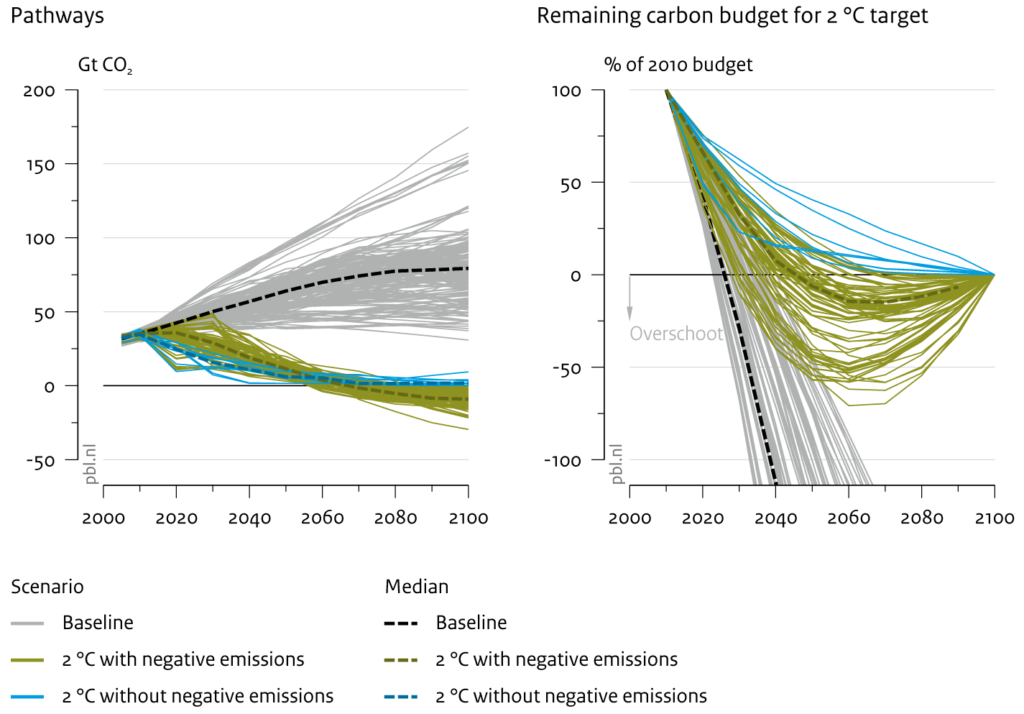
Figure 1 CO2 emission pathways and remaining carbon budget. Figure from van Vuuren [3], based on data from the IPCC AR5 database.
In the 2°C scenario (2DS) technology portfolio laid out by IEA in the 2016 Energy Technology Perspectives CCS, including Bio-CCS, accounts for 12% of the total global CO2 reduction by 2050, see Figure 2. Bio-CCS is expected to account for 2% of the cumulative reductions, totalling a negative capture of around 14 GtCO2 by the mid-century.
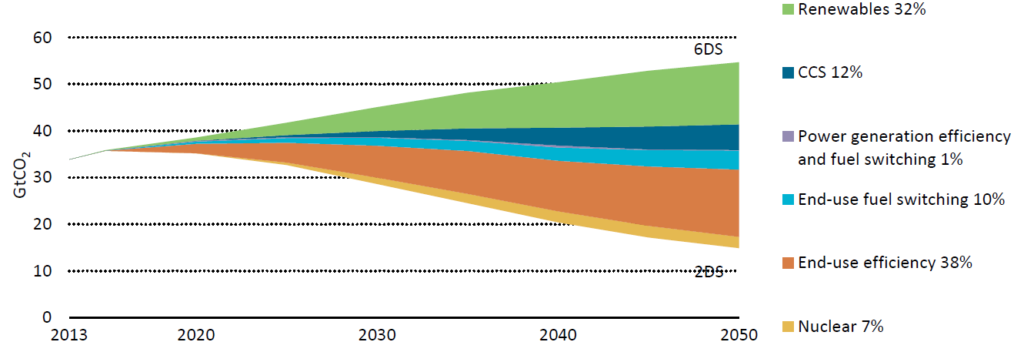
Figure 2 2DS from IEA’s Energy Technology Perspectives (2016).
The total negative emissions delivered by 2050 are expected to amount to ca. 1 GtCO2, which is equivalent to 16% of all CO2 captured in 2050 in the 2DS, see Figure 3. The accumulative number of this amounts to 14 Gt CO2 and most of this carbon is expected to be captured from biofuel production (80%).
Negative emissions offer the possibility for offsetting higher emissions elsewhere in the system where CO2 reduction may prove too expensive or otherwise too challenging. The transport sector, including aviation, has proven to be a challenge for CO2 emission reductions. Currently, significant R&D is focused on bio-based transportation fuel, but widespread implementation of technologies to reduce emissions from transport remains to be seen. Negative emissions may also enable a near term overshoot of the carbon budget in a technology and policy transition period towards full implementation of Bio-CCS technologies. The possibility for overshooting the carbon budget is imminent. To have a 50% chance of reaching the 2DS we have less than 30 years left of the carbon budget with the current emission level. For comparison, for a 50% chance to reach the 1.5°C target, we have less than ten years left of the carbon budget. Another important feature with negative emissions is the potential to withdraw historic emissions.
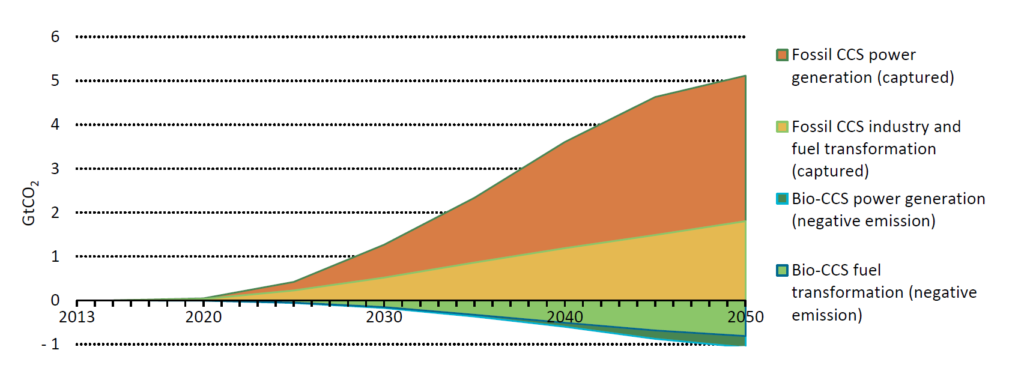
Figure 3 The role of negative emissions in the 2DS
Sustainability of Bio-CCS
The negative emission potential of Bio-CCS is not unambiguous and it remains critical to look at the sustainability of biomass utilization. Sustainability issues regarding use of biomass are related to social, environmental and economic factors.
Water, energy, carbon and land are all factors that need to be taken into consideration when accounting for the sustainability of Bio-CCS. Different types of biomass and crops can represent large variations in footprint, depending on yields and fertilizer input. The use of biomass involves the potential for direct and indirect land use changes. Direct land use change is a result of for instance clearing of land and is directly tied to the type of land being utilized for bioenergy production. Implementing CCS in for instance biofuel production requires energy, and the emissions from this energy production may be just as high as in the original process. Implementing CCS in biomass-fired power plants will reduce their efficiency. In order to replace this energy the total feedstock rate to the plant increases and the result may not be as negative as first imagined. The situation is illustrated in Figure 4 where two different combined heat and oxy-CFB power plants with CCS were compared to a power plant operated with fossil fuel. In CCS1 the parasitic load caused by the CCS plant has been replaced with electricity produced with coal, and in CCS2 with electricity produced based on the Finnish average, which has a lower emission factor.
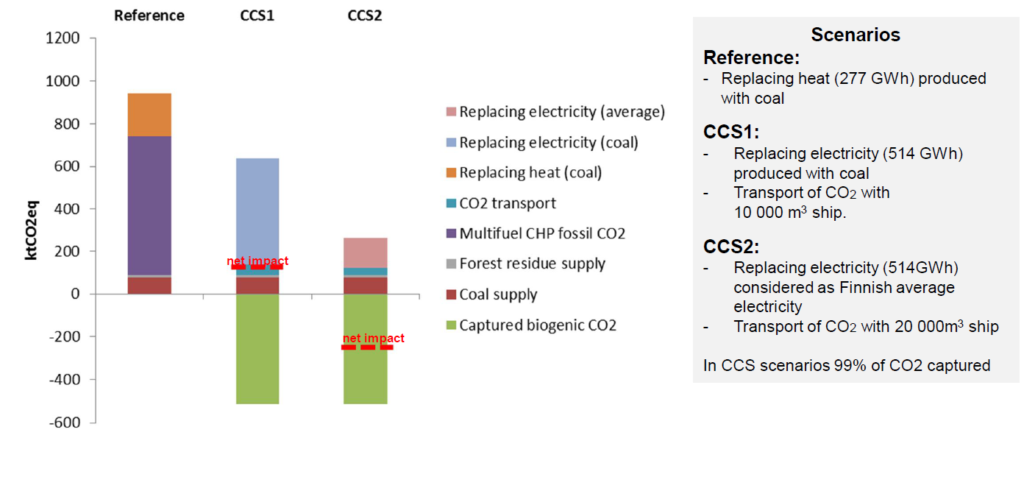
Figure 4 Example of GHG impact from Bio-CCS
It is fundamental for net negative CO2 emissions from Bio-CCS systems that the biomass utilized has been grown and harvested in a sustainable manner. Emissions induced as a result of land use changes (direct or indirect) during production of biomass for bioenergy can render the negative emissions from bio-CCS smaller than the total net CO2 capture. Furthermore, in relation to slow rotation biomass (e.g. forests), it is important to understand the ongoing scientific debate on the climate impacts. The CO2 released in combustion of slow rotation biomass will spend some time in the atmosphere before being sequestered back to growing plants. During this visitation in the atmosphere the CO2 will have a warming effect. As a consequence of this temporal scale, it could be argued that the net negative emission effect is not immediate, but will only be fulfilled once the carbon is fixed in the biomass again, see Figure 5.

Figure 5 Carbon sequestration over time
The carbon breakeven time, or the time required for the system to reach carbon neutrality depends on land type and crop type and can vary significantly. On average, the carbon breakeven time for energy crops is around 4 – 30 years.
Another important issue is the so called foregone carbon sequestration, meaning the lower carbon sequestration of forests in intensive harvesting scenarios compared to less intensive harvests. From an atmospheric point of view, this lost carbon sequestration can be considered similar to carbon emissions and the resulting impact could be attributed to the products produced from biomass. The use of residual biomass is often considered sustainable and the best option for the climate as the residues could otherwise decay quite rapidly and release the carbon anyway. The situation is illustrated in Figure 6.
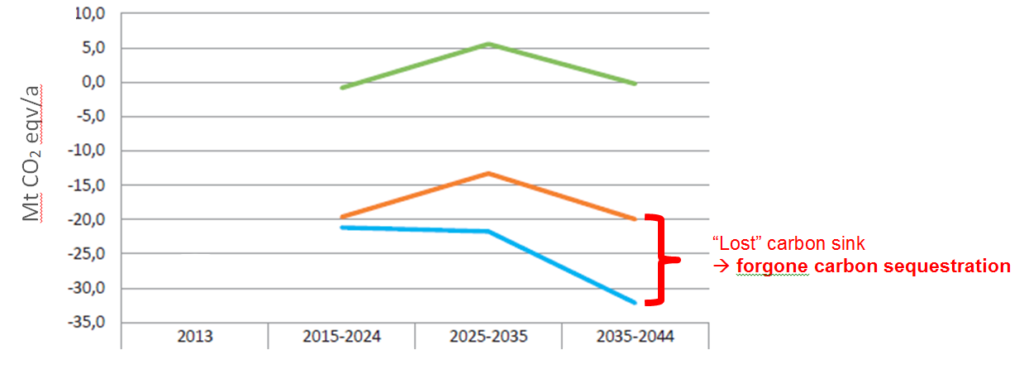
Figure 6 The effect of additional wood harvesting on the carbon balance on landscape level
|
|
A comparison between Bio-CCS, direct air capture (DAC) and enhanced weathering [5] as alternatives to create net negative emissions showed that the production of bioenergy for Bio-CCS would lead to 3% higher utilization of fresh water reserves. An ongoing study suggests that energy crops have a lower fresh water footprint than conventional crops like for instance wheat. The main reason for this is the higher yield of energy crops and a lower requirement for fertilizer input. The input of fresh water during growth and throughout the supply chain leads to embodied water in the biomass. This embodied water affects for instance the water intensity of the power plant when biomass is used as fuel. For plants co-firing with dedicated energy crops that are less water intensive the power plant water intensity is lower compared to plants co-firing more water intensive conventional crops. Nevertheless, the variation in water intensity can be considerable also for different energy crops.
The embodied energy of biomass feedstock includes, but is not limited to, biomass production, transportation, and mechanical and thermal pre-treatment (for e.g. drying, grinding, pelleting, torrefaction). Embodied energy depends mainly on location, processing and type of biomass crops. Crops grown and harvested close to the plant will naturally have a smaller embodied energy than crops requiring large transport distances. In addition, road transportation for biomass raw material is especially energy intensive, as compared to rail and sea transport. The way of growing and harvesting crops will also affect the embodied energy; large-scale mechanical/industrial harvesting is more energy intensive than traditional manual harvesting. Embodied energy is also affected by the crop moisture content, for instance concerning industrial drying. Woody biomass with high moisture level will have a much higher energy requirement for drying. Biomass feedstock with high embodied energy will directly lower BECCS net chain efficiency. As a consequence, it is important to take into account the entire supply chain when addressing the energy performance of the overall system.
Similarly, biomass production, transport and processing also impact the carbon footprint of the biomass feedstock. In particular, the utilization of nitrogen based fertilizers has a double impact on the carbon footprint, from both the CO2 released during the production of the chemical, and the emissions of N2O after application on the field. Direct land use changes (LUC) for cropland is moderate as this is typically low carbon debt land, but on the other hand the effect of indirect land use change (ILUC) for cropland on the carbon footprint can be significant. The carbon intensity of a power plant decreases with increased biomass co-firing and higher CO2 capture rates. However, this effect can be offset and even result carbon positive when accounting for the entire supply chain including LUC and ILUC. For instance, under certain supply chain conditions (high direct and indirect land use change, drying and pelletization, long transport distance) 50% co-firing of a woody biomass such as willow will no longer be a carbon negative option. This serves to underscore the importance of a thorough, case-by-case assessment of BECCS projects [5].
To illustrate the effect of an optimistic scenario of Bio-CCS on land use and fresh water consumption the sequestration of 50 Mt CO2/a would require 0.05 – 2 Mha land annually, 7 – 150 billion m3 water (compared to the total agricultural withdrawal of water in Europe of 334 billion m3) and between 11 to 223 500 MW Bio-CCS units. The total land use required for limiting the global temperature warming to 2°C is estimated to 500 Mha for growing bioenergy. Currently, around 4500 Mha is used for food production [6].
Biomass potential is a key question when discussing Bio-CCS. An analysis of the amount of biomass required after 2050 in the different IPCC scenarios span from 25 EJ/a up to more than 350 EJ/a. Utilization of primary energy for bioenergy purposes may be sustainable up to 100 EJ/a. Higher rate of primary energy utilization may interfere with forestry and farm land and we might see a need for changes, and above 300 EJ/a there might even be potential for conflict. This draws on the question whether the planet can sustain a society based on 50% or more bioenergy, taking into the equation the growing population on earth, and whether it is realistic to use as much biomass as some of the scenario models suggest. Adding to the utilization of biomass is the final storage of captured CO2. A quick calculation shows that even for a moderate Bio-CCS scenario the number of wells can amount up to 10 000.
Importance of stimulating cost-effective mitigation
There is a large gap in the carbon budget for a baseline scenario compared to a 2°C mitigation scenario. As illustrated in the figures above the emission scenarios are assessed within a time frame lasting until the end of this century. In order to reach the 2°C target negative emissions are required already in the first half of the century. The difference in emission trajectory between scenarios that allow for negative emissions and scenarios that do not is significant, and the difference is clear starting already from the next two to three decades. This means that the political decision whether to allow for negative emissions or not will essentially determine the emission trajectory until 2030 – 2050, and should be made in the near future.
Figures 1 to 3 clearly illustrate that we are running out of time. They also illustrate that delaying decision making will further narrow down our mitigation tool options and increase the dependency on Bio-CCS in order to curb global temperature increase. Shifting the current trajectory from business as usual towards zero emissions by the end of this century will require a significant decrease in CO2 emissions over a relatively short period of time. This can result in a very costly transition. Luderer et al. [4] estimated for instance that the mitigation cost of achieving 1.5°C is significantly higher (4 – 6.5% of GWP) than the costs for achieving a 2°C limitation (1 – 2.5% of GWP).
Chemical Looping Combustion – a cost-effective Bio-CCS solution?
Chemical Looping Combustion (CLC) is a cutting-edge combustion technology where the fuel and combustion air do not directly interact. Instead, an oxygen-carrier transfers oxygen for combustion to the fuel. As a result, there is no need for active gas separation, which typically comprise a large share of costs and efficiency losses related to CO2 capture technologies. A direct result of this is a potential breakthrough in costs of CO2 capture.
The combustion system consists of two reactors; one air reactor where oxygen is extracted from air. An oxygen-carrier, typically a metal, transfers the oxygen to the second reactor, a fuel reactor where the oxygen is used to combust the fuel. The oxygen-carrier cycles back to the air reactor for reuse. Combustion products from the fuel reactor include CO2 and water, see Figure 7.
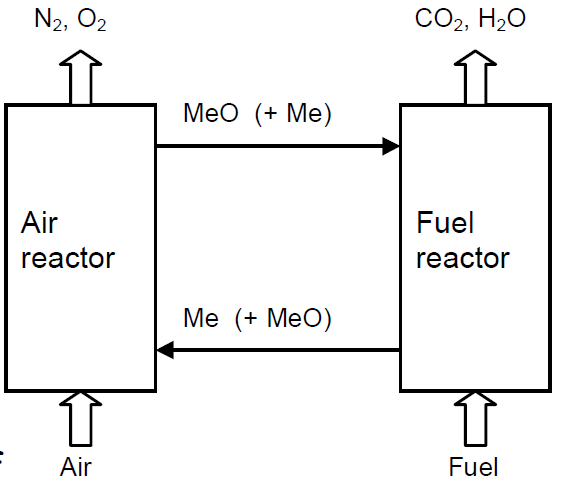
Figure 7 A simplified block diagram of the CLC technology concept
The technology is currently at pilot level, but ready for scale-up. The initially estimated cost for the CLC technology amounts to 16 – 26 €/t CO2, which is significantly lower than most other CO2 capture technologies. The main cost reducing factor of CLC is the significantly lower capital investment cost, which can be as low as 0.2 €/t CO2 for a retrofit circulating fluidized bed boiler system.
Bio-CCS does not allow us to peak later
Without social acceptance there is little incentive mechanisms to drive the development of Bio-CCS. A general delusion among the public is that Bio-CCS and the production of energy crops is competing for land and resources with food production and forest development. There is also a notion that especially Bio-CCS could even prevent large scale implementation of renewable energy. Another critical misconception is that Bio-CCS is a possibility for using negative emissions as a delaying tactics or a quick fix for continuing business as usual.
It is important to recognize that negative emissions are not a free ride to continue the current trajectory. Negative emissions may offer the possibility to temporarily overshoot the carbon budget, but it is not a tool to postpone the time when we need to take action to reduce emissions. This impression is especially unfavourable if it reaches policy makers, who might oppose development of the technologies.
The significant gap between the current situation and where we need to be in terms of climate mitigation changes requires additional emission reduction pathway as well. Bio-CCS has a key role in curbing CO2 emissions and can be an important remedy in a transition period towards cleaner renewable energy systems, but it is not the only means that should be included in the climate change mitigation tool box.
What now?
In order for CO2 emissions to be considered negative it is essential that the biomass from which they originate is produced sustainably. The sustainable production of biomass is based on rational and responsible policies that must take into account social, environmental and economic viability. For this to be realized, careful assessments of the actual negativity of biogenic CO2 emissions are needed, that take into account the entire life cycle of the carbon, including direct and indirect emissions related to land use change.
Acknowledgement
IEA Bioenergy Task 41 would like to thank the following presenters for input:
Detlef van Vuuren, Utrecht University
Samantha McCulloch, IEA
Kati Koponen, VTT Technical Research Centre of Finland, Ltd.
Mathilde Fajardy, Imperial College London
Keith Whiriskey, Bellona Europa
John Litynski, US DoE/CSLF
Anders Lyngfelt, Chalmers University of Technology
References
[1] United Nations Framework Convention on Climate Change. 2017. The Paris Agreement. http://unfccc.int/paris_agreement/items/9485.php
[2] IPCC. 2014. Climate Change 2014: Mitigation of Climate Change. Contribution of Working Group III to the Fifth Assessment Report of the Intergovernmental Panel on Climate Change. Edenhofer, O., R. Pichs-Madruga, Y. Sokona, E. Farahani, S. Kadner, K. Seyboth, A. Adler, I. Baum, S. Brunner, P. Eickemeier, B. Kriemann, J. Savolainen, S. Schlömer, C. von Stechow, T. Zwickel and J.C. Minx (eds.). Cambridge University Press, Cambridge, United Kingdom and New York, NY, USA.
[3] van Vuuren, D. 2016. On IPCC models, bio-CCS and negative emissions. IEA Bioenergy Task 41 Special project on Bio-CCS and Bio-CCU workshop, Lausanne, Switzerland, 16 November 2016.
[4] Luderer, G.; Pietzcker, R.C.; Bertram, C.; Kriegler, E.; Meinshausen, M. and Edenhofer, O. 2013. Economic mitigation challenges: how further delay closes the door for achieving climate targets. Environ. Res. Lett., Vol. 8, No. 3. DOI: doi:10.1088/1748-9326/8/3/034033.
[5] Fajardy, M. and Mac Dowell, N. 2017. Can BECCS deliver sustainable and resource efficient negative emissions? Energy Environ. Sci., Vol. 10, pp. 1389 – 1426. doi: 10.1039/C7EE00465F
[6] Smith, P.; Davis, S.J.; Creutzig, F.; Fuss, S.; Minx, J.; Gabrielle, B.; Kato, E.; Jackson, R.B.; Cowie, A.; Kriegler, E.; van Vuuren, D.P.; Rogelj, J.; Ciais, P.; Milne, J.; Canadell, J.G.; McCollum, D.; Peters, G.; Andrew, R.; Krey, V.; Shrestha, G.; Friedlingstein, P.; Gasser, T.; Grübler, A.; Heidug, W.K.; Jonas, M.; Jones, C.D.; Kraxner, F.; Littleton, E.; Lowe, J.; Moreira, J.R.; Nakicenovic, N.; Obersteiner, M.; Patwardhan, A.; Rogner, M.; Rubin, E.; Sharifi, A.; Torvanger, A.; Yamagata, Y.; Edmonds, J. and Yongsung, C. 2015. Biophysical and economic limits to negative CO2 emissions. Nature Climate Change, Vol. 6, pp. 42 – 50.
